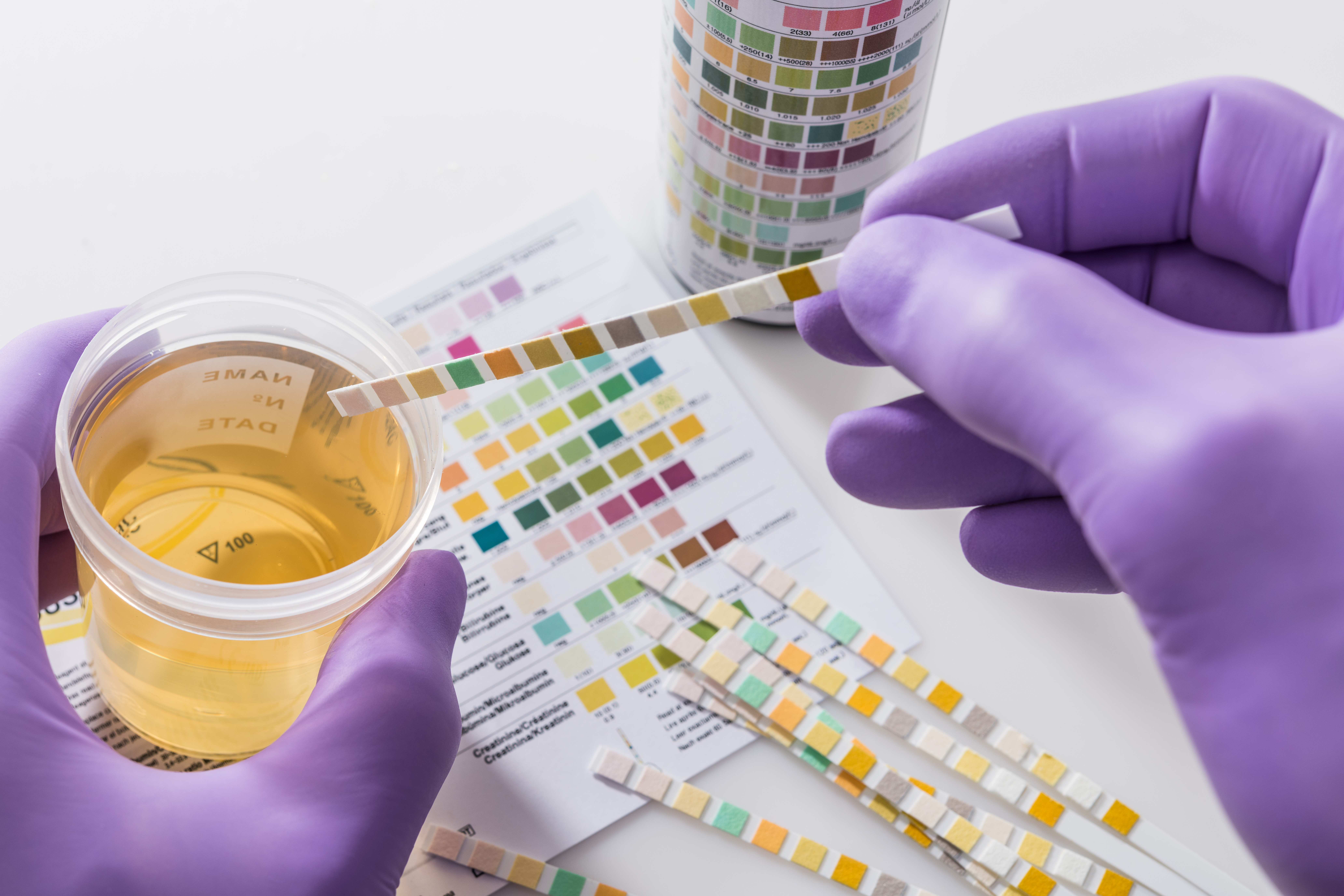Understanding Drug Testing: Hair vs Urine vs Blood
Drug testing plays a critical role in various fields, including healthcare, law enforcement, sports, and workplace environments. With the increase in drug addiction and it is important to recognize the signs of substance abuse as well as the need to ensure safety and compliance, and drug testing has become a regular procedure. Among the most commonly used testing methods are urine, blood, and hair tests.
This article explores the three most common drug testing methods—urine, blood drug test vs urine, and hair drug test vs urine—examining how they work, their detection windows, and their advantages and limitations.
Urine Drug Testing: The Standard Method
Urine drug testing is one of the most widely used and affordable methods for detecting the presence of drugs. It is commonly employed in workplace drug screening, healthcare, probation, and other areas where rapid testing is necessary. This method can detect a wide range of substances, including illicit drugs, prescription medications, and over-the-counter drugs.
How Urine Testing Works
Urine drug testing involves collecting a sample of urine from the individual being tested. The sample is typically analyzed in a laboratory using immunoassay or gas chromatography-mass spectrometry (GC-MS) techniques. These methods work by detecting specific metabolites in the urine that are produced when the body processes drugs.
The most common drugs tested for using urine samples include marijuana, cocaine, opiates, methamphetamine, ecstasy, and benzodiazepines. The results from the urine test are typically available within a few hours or days, depending on the complexity of the test and whether the sample needs to be sent to an outside lab for analysis.
Detection Windows
Urine drug testing can detect drugs in the system for varying lengths of time depending on the drug type, usage frequency, and the individual’s metabolism. On average, urine testing can detect:
- Marijuana (THC): 3-30 days (longer for heavy users)
- Cocaine: 2-4 days
- Opiates (e.g., heroin, morphine): 2-4 days
- Methamphetamine: 2-5 days
- Ecstasy (MDMA): 1-3 days
- Benzodiazepines: 1-7 days
Advantages and Limitations
- Cost-effective: Urine testing is less expensive than other testing methods, making it a popular choice for many organizations.
- Non-invasive: It is easy to administer and does not require professional supervision in most cases.
- Quick results: The test can provide results relatively fast, which is important for situations requiring immediate answers.
- Short detection window for some drugs: For drugs with shorter half-lives (like cocaine and methamphetamine), urine testing may not detect recent use.
- Possible tampering: Individuals may attempt to alter their urine samples, such as by diluting the sample or adding foreign substances.
- Limited to recent use: Urine tests typically detect drugs used within a few days, so they may not be useful for long-term drug history detection.
Blood Drug Testing: Precise but Limited
Blood drug testing is another method commonly used for detecting drugs, particularly in cases where accuracy and precision are critical. When comparing blood drug tests vs urine testing, blood tests provide a more accurate and real-time assessment of drug levels in the bloodstream. However, they come with limitations such as a shorter detection window.
How Blood Testing Works
Blood drug testing involves drawing a blood sample from the individual, usually from a vein in the arm. The sample is then analyzed in a laboratory for the presence of drugs or their metabolites. Blood testing can provide an accurate, real-time assessment of drug levels in the system, making it particularly useful in emergencies or in cases where a precise measurement of intoxication is needed.
Detection Windows
Blood tests can detect drugs in the system for a shorter period than urine or hair tests. Since blood circulates through the body and is metabolized faster than urine or hair, drug traces in the blood dissipate more quickly. On average, blood testing can detect:
- Marijuana (THC): 1-2 days
- Cocaine: 1-2 days
- Opiates: 1-2 days
- Methamphetamine: 1-2 days
- Ecstasy: 1-2 days
- Benzodiazepines: 1-7 days
Advantages and Limitations
- Precise results: Blood testing provides the most accurate and direct measure of drug levels in the body, making it suitable for legal or medical purposes.
- Immediate detection: Blood tests are often used in emergencies for a quick and reliable assessment.
- Detection of intoxication levels: Since blood tests measure the current concentration of a drug in the bloodstream, they can be used to determine whether an individual is currently under the influence of a substance.
- Invasive: Blood testing requires a needle and can be uncomfortable for the individual being tested.
- Short detection window: Since drugs are metabolized quickly and eliminated from the bloodstream, blood tests have a narrow detection window compared to urine or hair tests.
- Costly and time-consuming: Blood tests are generally more expensive and time-consuming than urine tests, making them less practical for routine testing.
Hair Drug Testing: Long-Term Detection
Hair drug testing is a method that is used to detect drug use over an extended period, typically up to 90 days. It is particularly useful in situations where long-term drug use needs to be assessed, such as in legal cases, rehabilitation programs, and employment screening for safety-sensitive jobs.

How Hair Testing Works
Hair drug testing involves collecting a small sample of hair, usually from the scalp, although body hair can also be used. The hair is then analyzed for the presence of drug metabolites that have been deposited in the hair shaft as drugs circulate through the bloodstream. Since hair grows slowly, drugs consumed by an individual leave traces in the hair, which can be detected long after the drugs have been cleared from the body.
Detection Windows
Hair drug testing can detect drug use over a much longer period than urine testing. When considering hair drug tests vs urine testing, hair tests offer the advantage of detecting long-term drug use (up to 90 days), while urine tests are generally more suited for detecting recent use. The detection window for hair testing is generally as follows:
- Marijuana (THC): Up to 90 days
- Cocaine: Up to 90 days
- Opiates: Up to 90 days
- Methamphetamine: Up to 90 days
- Ecstasy: Up to 90 days
- Benzodiazepines: Up to 90 days
Advantages and Limitations
- Long detection window: Hair testing can detect drug use over a long period (up to 90 days), making it ideal for determining long-term usage patterns.
- Non-invasive: Collecting a hair sample is painless and non-invasive, unlike blood testing.
- Harder to tamper with: Unlike urine testing, it is more difficult to alter or tamper with a hair sample.
- Can’t detect recent drug use: Since hair testing detects drugs that have been deposited in the hair over time, it may not identify recent use (within the past few days).
- More expensive: Hair testing is generally more expensive than urine testing, and results take longer to process.
- Affected by hair treatments: Certain hair treatments (such as bleaching or dyeing) can interfere with test results.
Laguna Shores Recovery’s Approach to Drug Testing
 At Laguna Shores Recovery in Dana Point, California, we recognize the importance of drug testing in assessing substance abuse and guiding treatment. Our approach involves:
At Laguna Shores Recovery in Dana Point, California, we recognize the importance of drug testing in assessing substance abuse and guiding treatment. Our approach involves:
- Utilizing a combination of testing methods to provide a thorough assessment.
- Employing urine tests for routine monitoring and initial screening.
- Considering blood tests in specific situations requiring precise measurements.
- Leveraging hair tests for long-term monitoring and detecting chronic relapse.
- Maintaining strict chain-of-custody procedures to ensure accurate results.
- Counseling and education around drug testing to create full transparency with patients.
Factors Affecting Drug Test Results
Several factors can influence the accuracy and reliability of drug test results, regardless of the testing method used. These factors include:
- Drug type: Some drugs are metabolized more quickly than others, which can affect their detection window.
- Frequency of use: Heavy or chronic drug use can lead to longer detection windows, as substances accumulate in the body over time.
- Individual metabolism: Each person’s metabolism is different, meaning that drugs may be processed and eliminated from the body at varying rates.
- Hydration and diet: Drinking excessive amounts of water or having certain foods can impact test results, particularly urine testing.
- Hair treatments: As mentioned earlier, hair treatments can affect the results of hair drug testing.
Making Informed Decisions About Treatment
Understanding the various drug testing methods available can help individuals and organizations make informed decisions about treatment, safety, and compliance. Whether you are looking to enter a rehabilitation program, undergo workplace drug screening, or monitor long-term drug use, it is important to consider factors such as detection windows, cost, and accuracy when choosing the right testing method. Additionally, incorporating relapse prevention strategies alongside regular testing can enhance long-term recovery outcomes.
At Laguna Shores Recovery, we work closely with clients to ensure that they receive the support and care they need to live a healthy, drug-free life. Our approach to drug testing is rooted in compassion, accuracy, and a commitment to helping individuals achieve lasting recovery.
Live Out Your Best Future
Ultimately, drug testing is just one piece of the puzzle in the journey to recovery. At Laguna Shores Recovery, we believe in providing holistic therapy that addresses both the physical and emotional aspects of addiction. With the right support, you can move beyond substance abuse and live out your best future. Contact us today!

 Matthew Beck B.A, M.A, LMFT
Matthew Beck B.A, M.A, LMFT 


